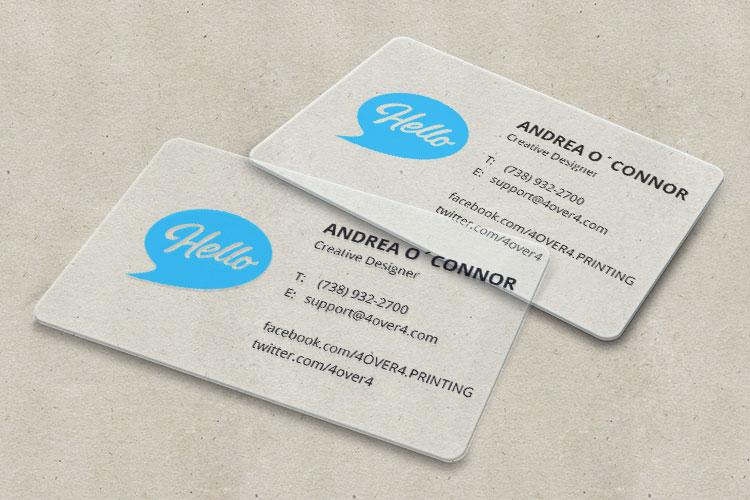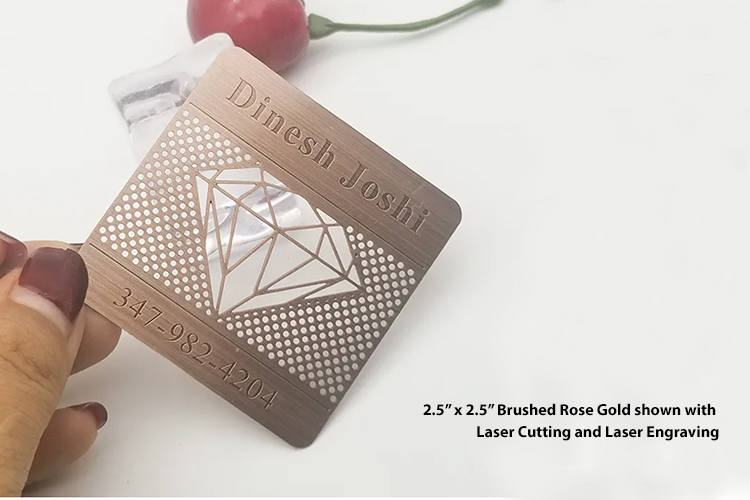Your business card presentation is the first impression of your business for many. Hence, you should choose properties that are congruent with your ideals, like color, paper type, and business card shape. But your card’s size is just as important. So what is the size of a business card, and what are your options?
What Is The Average Business Card Size?
Understanding the Importance of Business Card Size
Your business card size has several significance. We will look at how many inches is a business card as well as what's the standard size of a business card
- Portability: The standard size (3.5 inches by 2 inches) will fit in most wallets or holders and are thus easy and convenient to carry around.
- Design: A business card's size impacts its design. So, while some designs look good on a standard card, others are better on square-shaped (2 inches by 2 inches) or Foldover business cards.
- Cost: Standard-sized cards are a cost-effective option than larger or custom-sized cards. Consider your budget when deciding on size.
- Professionalism or uniqueness: A standard-sized business card may signal professionalism. However, a custom-shaped card helps convey remarkability and creativity.
So what is the size of a business card, and what are your options?

What Is The Size Of A Business Card?
Some of the popular business card sizes include the following (in inches):
The standard size in the United States and Canada is 3.5" by 2" (or 89 mm by 51 mm). However, checking with your printer or designer is vital since this standard varies for different locations. For example, the standard size in Europe is 3.375" x 2.125" (or 85.725 by 53.975).
Standard Business Card Sizes: What You Need to Know
Standard size business cards are professional-looking and will adequately represent your brand. But here are other noteworthy points on standard card sizes:
- Size variations: 3.5” by 2” is the standard size, but there are variations in size and dimensions depending on the location and specific printer requirements. For example, they can be slightly larger or smaller than the standard size in Europe and other parts of the world.
- Bleed area: The bleed area is the extra space around the edge of your design that is trimmed off during printing. Leave at least 0.125 inches (3 mm) of bleed area as useful padding to enhance readability and avoid information getting chopped off.
- Font size: We advise using a font size of at least 8 pt to ensure your information is easy to read.
Orientation: Landscape is the general layout, but there's also the portrait orientation. Remember, you can choose a layout to match your preference and design requirements.
Unconventional Business Card Sizes: Are They Effective?
Standard business card sizes may be safe and reliable, but unconventional sizes can help your card stand out and make a lasting impression on potential customers. You should consider these few points when deciding on an unconventional business card template size:
- Purpose: A larger business card can help to showcase your products, services, or offers.
- Printing: Unconventional sizes cost more to print than standard sizes. However, the cost difference is minimal for this type of investment.
- Functionality: Oversized cards may be too large to fit in a wallet or cardholder. So we advise moderate-sized cards instead.
- Design: An unconventional business card size looks novel and will help your brand stand out. Still, you want to avoid cluttering your card design since this will detract from its overall effectiveness.

Factors to Consider When Choosing the Right Business Card Size
A few factors should play out when considering a business card size. Usually, these should include your:
-
Purpose,
-
Industry,
-
Budget,
-
Design, and
-
Practicality.
So what is the size of a business card going to be? Whatever you decide, consider using an online printing service like 4OVER4. We offer high-quality, customizable business card products at great prices and fast turnaround times.
The Art of Choosing Your Business Card Size
When it comes to selecting the size of your business card, it's not just about aesthetics—it's about function and brand alignment too. Your business card should complement your branding by fitting in with the overall design scheme, and not be an afterthought. If you're aiming for a minimalist look, a clean and classic standard-sized card (3.5" x 2") might be your best option.
Alternatively, if you want your brand to be perceived as bold and innovative, you may explore more unique sizes or even custom shapes. Bear in mind that your business card size also impacts how the card is handled.
A card that doesn't fit into a standard wallet or cardholder may become a nuisance, while one that is too small can easily become lost or overlooked. Balance innovation with practicality for the best outcome.
Understanding that the size of your business card is an extension of your professional presentation, you must choose wisely. Whether you're networking in a corporate environment or a creative space, your business card size should complement and enhance all other aspects of your brand without compromising the card's functionality.
Remember, a business card is not just handed out—it's handed on, representing your brand in your absence and potentially opening the door to new opportunities.
FAQs
Q: What is the standard size for a business card?
A: The standard size for a business card is 3.5 x 2 inches.
Q: How can I design a business card using a template?
A: To design a business card using a template, you can use design software like Adobe Illustrator or Photoshop, which offers pre-made business card templates.
Q: What are square business cards, and how are they different from standard-size business cards?
A: Square business cards have equal dimensions on all sides, which distinguishes them from the traditional rectangular shape of standard-size business cards.
Q: What is the recommended pixel resolution for designing a business card?
A: The recommended pixel resolution for designing a business card is 300 DPI (dots per inch) to ensure high-quality printing.
Q: What are the most popular business card sizes besides the standard size?
A: Some popular business card sizes include square business cards, mini business cards, and two-sided business cards that offer unique design options.
Q: How can I ensure that the final size of my business card matches the design dimensions?
A: To ensure that the final size of your business card matches the design dimensions, work closely with your printing service provider and select the appropriate paper stock for printing.
Q: Should I consider rounded corners for my business card design?
A: Rounded corners can add a unique touch to your business card design, but before making a decision, consider whether it aligns with your brand image.
Q: What are some best practices for printing business cards?
A: Some best practices for printing business cards include using high-quality design elements, selecting the right paper stock, and ensuring the correct dimensions for printing.

